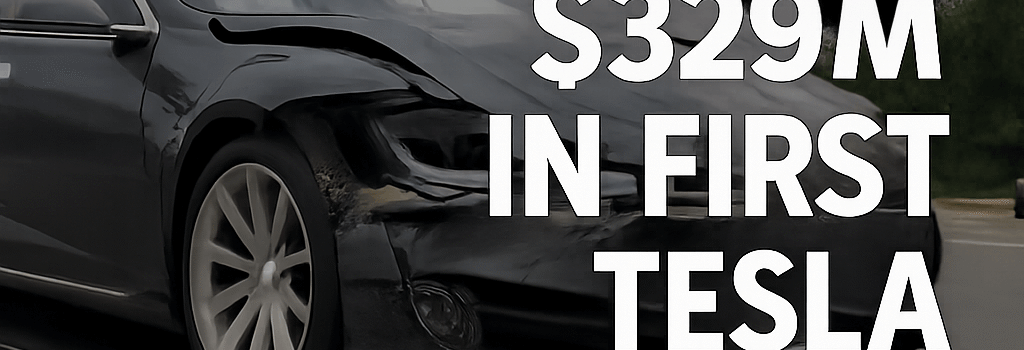Jury Awards $329M in First Tesla Autopilot Death Case

Background of the 2019 Miami Crash
On March 1, 2019, George McGee was operating his Tesla Model S in “Autopilot” mode when the vehicle failed to stop at a four-way intersection in Miami-Dade County. Traveling at 62 mph, the car ran a stop sign and struck Naibel Benavides and her partner, Dillon Angulo. Benavides was killed instantly; Angulo suffered a severe traumatic brain injury.
Legal Findings and Jury Verdict
In federal court in Miami, a 12-member jury found Tesla partially liable, concluding that the company sold the Model S with “a defect that was a legal cause of damage.” Though the driver bore some responsibility, jurors awarded the plaintiffs:
- $129 million in compensatory damages
- $200 million in punitive damages
“Tesla’s lies turned our roads into test tracks for their fundamentally flawed technology,” said Brett Schreiber, lead counsel for the plaintiffs. “Today’s verdict holds Tesla and Elon Musk accountable for propping up the company’s trillion-dollar valuation with self-driving hype at the expense of human lives.”
Technical Analysis of Tesla Autopilot
Tesla Autopilot combines a suite of eight cameras, 12 ultrasonic sensors, forward radar, and an in-cab driver-facing camera to provide Level 2 driver assistance under SAE J3016 standards. The system relies on Tesla’s custom AI vision stack, updated via over-the-air (OTA) neural-network weight adjustments.
Key limitations highlighted at trial:
- Driver Monitoring: Tesla uses torque sensors in the steering column rather than continuous eye-tracking. Experts argued this method can fail to detect driver distraction for >10 seconds.
- Speed & Path Planning: Autopilot’s path planner optimizes highway lane-keeping but lacks robust intersection handling logic; its stop-sign recognition relies on camera-based detection that can be occluded by lighting conditions.
- Misleading Safety Metrics: Tesla’s public “engagement” statistics—such as “miles driven per crash”—do not isolate Autopilot usage and omit crashes where drivers intervened late.
Industry Standards and Regulatory Response
The National Highway Traffic Safety Administration (NHTSA) opened a formal probe (PE21-020) into Tesla’s collision avoidance performance in 2021. By mid-2025, NHTSA expanded its investigation to include driver monitoring compliance and over 30 crashes involving Autopilot. Concurrently, the National Transportation Safety Board (NTSB) recommended regulatory requirements for in-cab cameras to meet ISO 21448 (SOTIF) safety goals.
Expert Opinions on Human–Machine Interfaces
Stanford’s Professor Christopher Gerdes testified that effective driver-assist systems require continuous, multimodal monitoring (camera + capacitive touch). In comparison, Honda’s Sensing Elite and General Motors Super Cruise use infrared cameras and lane-level geofencing to restrict hands-off operation to pre-mapped highways.
Implications for Tesla and the Broader Industry
This landmark ruling may accelerate stricter oversight and prompt automakers to enhance driver engagement systems. For Tesla, the verdict raises questions about:
- Over-the-air update liability: Can features rolled out remotely create new legal exposures?
- Brand messaging vs. system capabilities: How to align marketing claims with SAE definitions?
- Global regulatory divergence: Europe’s upcoming EU AI Act may push toward standardized risk classification for advanced driver assistance.
Next Steps for Plaintiffs and Tesla
Tesla is expected to appeal. Meanwhile, automakers and Tier 1 suppliers are monitoring the case closely, as it sets precedent for punitive damages tied to software and AI-driven vehicle functions.